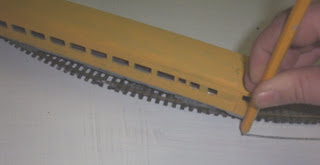Everything on model trains, model railroads, model railways, locomotives, model train layouts, scenery, wiring, DCC and more. Enjoy the world's best hobby... model railroading!
Clearances for Model Railroad Tracks
As with the prototype, model railroad tracks pass various types of scenery, including platforms and buildings, and cross over or join other tracks. To do this properly, without causing grief to the railroad company, a set of clearance standards are applied to the area around the track.
Sometimes when railroad companies merge, the clearance standards for the merging companies are different, and so a new set of clearance standards needs to be reached. This may mean cuttings need to be made wider, new tunnels may have to be cut, curves may have to be made broader, sidings may have to be moved, and signals and signs relocated.
For the model railroader the situation is similar, but with a little careful planning we can escape the clearance problems of railroad companies. We need to have a set of clearance standards to help us lay our track, and build scenery around that track. The clearance standards we set for ourselves should take into consideration the following:
- Length of rollingstock you want to operate
- Height of rollingstock you want to operate
- Width of rollingstock you want to operate
- Space between tracks or scenery objects to allow you to pick up a derailed car etc, without causing damage
- Available space vs desired track arrangement
My ebook has more helpful model railroad tips for you.
Subscribe
Login
0 Comments
Oldest















